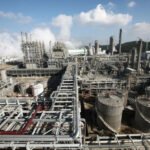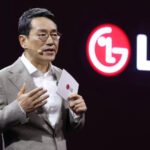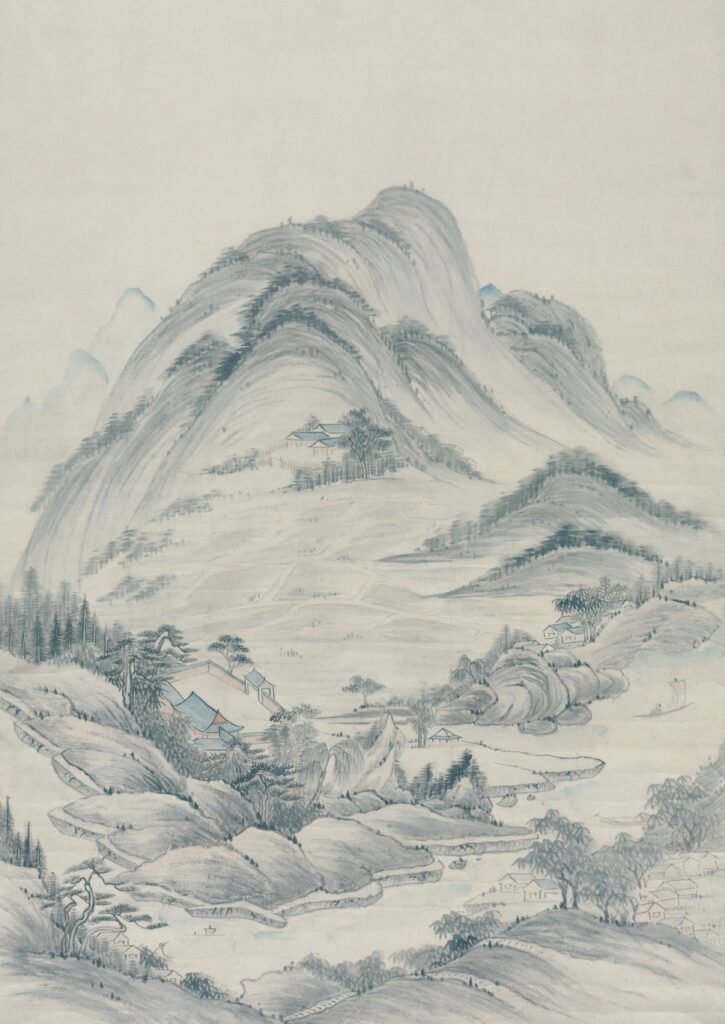SK Group Chairman Chey Tae-won visits Absolics’ factory in the US state of Georgia on July 7, 2024 (Courtesy of Yonhap)
South Korea’s household names Samsung, SK and LG have entered a new race to win the glass substrate market set to burgeon in the era of artificial intelligence, requiring massive data processing.
According to sources in the semiconductor industry on Monday, Chey Tae-won, the chairman of SK Group controlling multiple companies across industries including SK Hynix Inc., toured the world’s first glass substrate-manufacturing factory owned by Absolics Inc. in Covington, the US state of Georgia, during his business trip to the US last week.
Absolics is a US subsidiary of SKC Ltd., a chemicals arm of Korea’s second-largest conglomerate. The company was set up in 2021 by SK to develop and manufacture glass substrates.
Chey is said to have met potential customers to market Absolics’ glass substrates, which are expected to be verified in the latter half of this year.
Samsung Electronics Co. Chairman Jay Y. Lee also visited the headquarters of Samsung Electro-Mechanics Co., Korea’s leading electronics parts maker, late last month to check on the development of glass substrates.
3D rendering of an AI circuit board
The two chairmen’s visit to their glass substrate-developing sites coincided with the growing expectations for the next-generation substrate, which is projected to play an important role in boosting the performance of AI chips.
The Insight Partners, a global market research firm, forecast the global glass substrate market will grow to $4.2 billion in 2034 from $23 million in 2024 at a compound annual growth rate of 5.9%.
NEXT-GENERATION SUBSTRATE
The glass substrate is considered a game changer for advanced chip packaging. It is more durable and stable than existing resin substrates, thanks to its distinctive properties such as ultra-low flatness and better thermal and mechanical stability, ensuring much higher interconnect density in a substrate.
These benefits enable high-density, high-performance chip packages for data-incentive workloads such as AI and data centers.
Intel Corp. last year vowed to invest 1.3 trillion won ($943.1 million) to commercialize glass substrates in 2028.
Samsung Electro-Mechanics’ resin substrate (Courtesy of Samsung Electro-Mechanics)
SK’s Absolics is ahead of its rivals at home and abroad in commercializing glass substrates. It opened its first glass substrate-manufacturing factory earlier this year and in May became the first Korean chip materials, parts and equipment company to receive a $75 million subsidy from the US government under the CHIPS and Science Act.
It is striving to become the world’s first to commercialize glass substrates.
Samsung Electro-Mechanics also plans to build a manufacturing facility this year to produce its glass substrate prototype next year to mass-produce glass substrates in 2026.
Korea’s other major electronics parts maker LG Innotek Co. is readying to launch a task force to produce glass substrates to join its two crosstown rivals.
Traditional resin substrate and chip players from the US, Japan and Taiwan are also actively reviewing plans to jump in the market.
Advanced Micro Devices Inc. (AMD) and US special glass leader Corning Inc. are among them, and especially, Corning is seeking to venture into the glass substrate market with its Korean operation.
Japan’s Ibiden, a global leading resin substrate player, is also actively reviewing a plan to enter the glass substrate market.
By Chae-Yeon Kim
why29@hankyung.com
Sookyung Seo edited this article.















